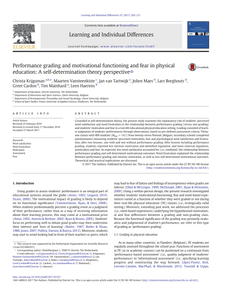World globalisation drives companies to undertake international expansion with the aim of retaining or growing their businesses. When companies globalize, managers encounter new challenges in making international marketing strategy (IMS) decisions, which are influenced by perceived cultural and business distance between their home- and foreign country. Telkom Indonesia International (Telin) was formed by Telkom Indonesia (i.e. the state-owned company in the telecommunication industry in Indonesia) to engage in international business within a global market. The central question in this study is to what extent do managers’ perceived cultural and business distance between home- and foreign country influence their IMS decisions? A mixed research strategy will be employed by applying qualitative and quantitative methods concurrently. The data collection will involve interviews with CEOs and managers, alongside a web survey to 55 managers of Telkom's. Results suggest important consequences for IMS decisions and emphasizes the need for dialogue on perceptions of cultural and business characteristics of countries.
DOCUMENT

Grounded in self-determination theory, the present study examines the explanatory role of students' perceived need satisfaction and need frustration in the relationship between performance grading (versus non-grading) and students' motivation and fear in a real-life educational physical education setting. Grading consisted of teacher judgments of students' performances through observations, based on pre-defined assessment criteria. Thirty-one classes with 409 students (Mage = 14.7) from twenty-seven Flemish (Belgian) secondary schools completed questionnaires measuring students' perceived motivation, fear and psychological need satisfaction and frustration, after two lessons: one with and one without performance grading. After lessons including performance grading, students reported less intrinsic motivation and identified regulation, and more external regulation, amotivation and fear. As expected, less need satisfaction accounted for (i.e., mediated) the relationship between performance grading and self-determined motivational outcomes. Need frustration explained the relationship between performance grading and intrinsic motivation, as well as less self-determined motivational outcomes. Theoretical and practical implications are discussed.
DOCUMENT

PURPOSE: Walking ability in general and specifically for lower limb amputees is of major importance for social mobility and ADL independence. Walking determines prosthesis prescription. The aim of this study was to mathematically analyse factors influencing claimed walking distance of lower limb amputees of 500 m or more.METHOD: A total of 437 patients returned two questionnaires: the Groningen Questionnaire Problems after Leg Amputation, in which walking distance was assessed, and the RAND 36.RESULTS: The chance of walking 500 m or more reduced when a transfemoral amputation was performed. The chance reduced even more when phantom pain or stump pains were present. If the amputation was performed because of vascular disease or because of vascular problems because of diabetes the chance reduced again. Independently of these factors, age reduced the chance of walking 500 m or more.CONCLUSION: The chance of walking 500 m or more reduces with increase in age and a more proximal amputation. The chance reduces even further when the amputation is performed because of diabetes or vascular disease and also if phantom pain and or stump pain is present.
DOCUMENT